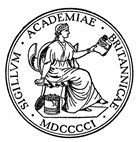A typology of distributed exponence: Mapping the limits of information distribution within the word
Project Overview
Project
A typology of distributed exponence: Mapping the limits of information distribution within the word
Project members:
Matthew J. Carroll
Prof Greville G. Corbett
Dr Matthew Baerman
Period of award
March 2017 - March 2019
Funder:
Newton International Fellowship/British Academy
Many languages mark grammatical meaning through a process known as inflection. Often the marking of these types of meaning is fairly transparent involving an incremental mapping between meanings and form, i.e. adding -ed to the word ‘talk’ gives the past tense meaning of talked. The mapping of grammatical meanings to forms is known as exponence. The incremental type is not the only option of marking such meaning available to languages. One alternative is distributed exponence, in which the marking of grammatical meaning is distributed across a number of smaller pieces of the word, each of which contribute a subcomponent of that meaning.
A clear example of distributed exponence comes from Nen, a Yam language of Southern New Guinea. In the partial paradigm reproduced below there is no single marker to indicate plural. Instead plural is marked through the combination yä- which we can see means not-singular and -ngr which means not-dual. Thus, if a word is neither singular (1), nor dual (2), it must mean plural (3+). In this way, we can say that the exponence of ‘plural’ is distributed over these two markers.
|
3rd singular 3rd dual 3rd plural |
y-trom-ngr yä-trom-aran yä-trom-ngr |
|
Partial paradigm of tromngr ‘to be erected’ (Evans 2015) |
|
The goal of this project is an exploration of distributed exponence across a broad sample of natural languages, in order to address three core research questions:
- What are the formal linguistic properties that D.E. may take? i.e. what are the clusters in the design space of language pertaining to D.E.?
- To what extent can a system exploit D.E. whilst still be learnable and maintainable across time? i.e. what are the most extreme cases of D.E. occurring in attested natural language?
- How do these extremely complex and non-optimal evolutionary systems arise and how are they maintained across time?
This phenomenon represents an extreme example of what is a possible exponence relation, yet it has been neglected to date. A study of how far this phenomenon may extend across a careful sample of the world’s languages promises to provide insights to limits of human language. A greater understanding of these limits is particularly relevant in addressing larger questions regarding how languages may evolve over time and the limits of human cognition.


